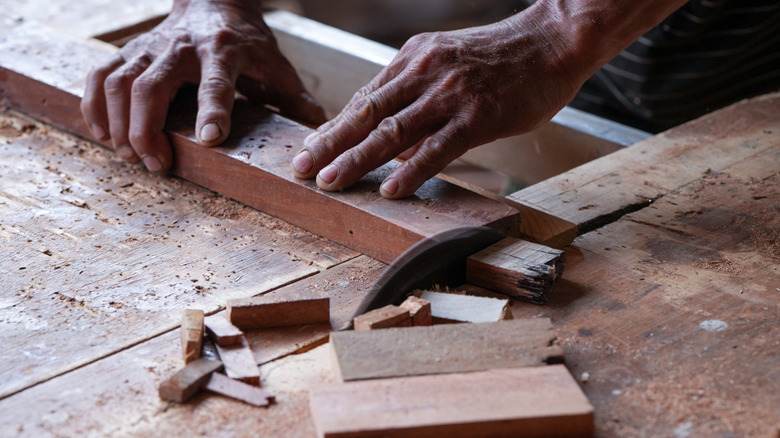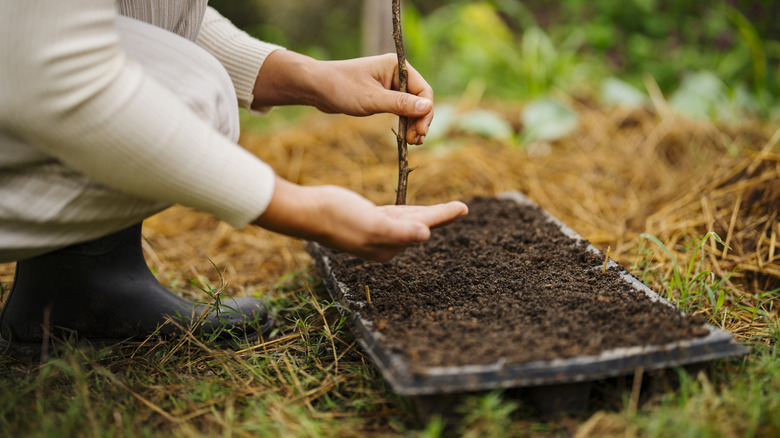The Only Thing You Need For This Gardening Hack Is A Scrap Piece Of Wood
We may receive a commission on purchases made from links.
An afternoon in the garden can be incredibly satisfying. You pulled weeds from all the planting beds, laid fresh mulch where needed, pruned the scraggliest shrubs, and repotted root-bound plants. You have a stunning yard to show for your hours of work. However, you also have dirt under your nails from clawing through soil when sowing seeds or potting up plants — even when wearing gardening gloves.
Enter the dibber, which is occasionally referred to as a dibbler. This is a handy gardening tool that creates a hole in the soil without digging up dirt. Store-bought dibbers come in various sizes, depending on its purpose. This may include sowing seeds, planting bulbs (similar to when you use a bulb planter), or transplanting.
If any of these tasks are on your to-do list — for example, if you have seedlings that are ready for the next pot size –you'll want to know about this tool and how it can be the perfect gardening hack. Best of all, you won't have to go to the store to get it. Just as the tool's purpose is simple, the dibber itself does not need to be elaborate. All you need to make your own dibber is a scrap piece of wood from an old house project or a branch from your yard.
Choosing the right stick for the dibber hack
If you're planting seeds, find a piece of wood similar in size to a pen, like this Spoken Garden Dibby seed sowing garden tool. You could even grab a twig or branch that has fallen in your yard. Add a notch or tie a piece of string tightly around the stick to mark the necessary depth for your seeds. Fill your pots with soil and then sink your homemade dibber into the dirt up to the notch or string. Follow this up with dropping a seed into each hole.
If you've started seeds indoors and now have seedlings to transplant into larger containers, find a scrap piece of wood that matches the size and shape of their current pot or root ball. You also can do this when transplanting potted plants or repotting your existing houseplants. You could use a bigger stick, too, but scrap wood might be particularly useful for the bigger holes needed for seedlings and plants in pots.
After you've got your chosen DIY dibber tool, instructions are similar to the method you use for the seeds: press the end of the wood into the dirt of wherever you're transplanting, whether it's a bigger pot, raised bed, or directly into the soil. Once all the holes have been created, pop the seedlings out of their pots, and fit them neatly into the divots that you just created with your DIY dibber. If the roots are particularly compacted, gently loosen them up before placing them in their new home. It's a simple garden hack for a free gardening tool.

